In 2022, American AgriBusiness leaders face a reefer container shortage forcing them to once more re-examine distribution logistics. What strategies can help AgriBusiness leaders navigate the reefer container shortage and maintain profits in 2022?
The Covid-19 pandemic brought global trade to a standstill. While some businesses weathered the storm fairly unharmed, knowing their products were safe in storage, others—like American AgriBusinesses—wore their concerns on their sleeves. Temperature-sensitive and seasonal products would perish if they couldn't get to the shelves and eventual consumers in time. The closing of foodservice establishments also forced farmers to rethink their distribution logistics wholesale. According to data from McKinsey, grocery store sales increased by 29% at the onset of Covid compared to the year prior, while foodservice plummeted 27%.
Restrictions eased and the foodservice industry began placing orders again, but with an overwhelming demand for general consumer goods, many manufacturers, shippers, and transporters couldn't keep up. Once again, while some businesses could manage the backlogs, farmers faced a bigger impact. Shipping containers ran scarce in general, and refrigerated containers (also known as reefers) in particular became something of a premium commodity.
Now in 2022 American AgriBusiness leaders face a reefer container shortage forcing them to once more re-examine distribution logistics. What strategies can help AgriBusiness leaders navigate the reefer container shortage and maintain profits in 2022?
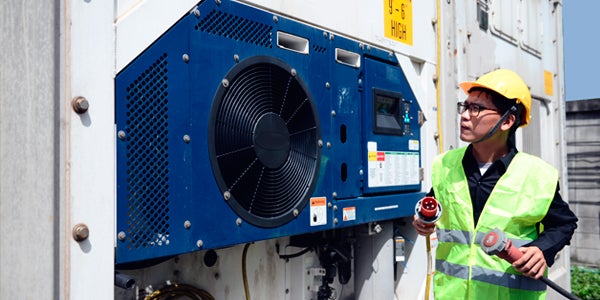
Impact of Reefer Container Shortage on American Fresh Produce Distribution
Many wrote off the initial shipping crisis as just another Covid-19 byproduct, assuming things would recover once economies reopened. However, the issue persisted, with delays and costs rising exponentially. Global supply chain analysts have since acknowledged that the situation could last longer than anticipated; some forecast as long as another two years.
Most of the problems do stem from pandemic-related shutdowns. But the limitations of just-in-time shipping and inconsistent price fluctuations added fuel to the fire. With shipping containers becoming more expensive by the day, American AgriBusiness faces a distribution logistics crisis unlike any seen before.
It's not that there aren't enough containers to go around. In fact, one could say it's quite the opposite. There are plenty of containers—they’re just not in the right place at the right time, due to port congestion and labor shortages.
Reefer containers sit in ports for weeks rather than days, waiting to unload and move on to the next customer. When farmers finally do get their hands on one, they pay significantly higher prices than they're used to. In fact, reefer container costs have tripled over the past year.
Studies from the University of California illustrate the extent to which West Coast farmers have felt the brunt of supply chain woes. The inability to obtain containers caused California's agricultural exports to fall by an estimated $2.1 billion in value—a roughly 17% drop. More specifically, the study found that monthly containers loaded with agricultural goods decreased by 18% in Los Angeles, 15% in Long Beach, and 34% in Oakland.
Speaking on the losses, Alessandro Cholet, an import manager for HM Distribution, highlighted the additional human resources required. “This situation requires additional effort and manpower to repack the salvageable products,” Cholet says. “The perishable nature of the products, added to the lack of refrigerated containers, has led to significant losses in goods and sales.”
The skyrocketing prices of available reefer containers aren't helping either. According to Drewry’s Reefer Shipping Annual Review and Forecast 2021/22, the global index based on the weighted rate average across the top 15 deep-sea routes rose 32% by Q2 2021. This trend shows no sign of slowing down through 2022, either. Drewry’s head of reefer shipping research Philip Gray says that “reefer freight rates are forecast to continue rising as price inflation feeds into north-south routes when long-term contract rates are renewed.”
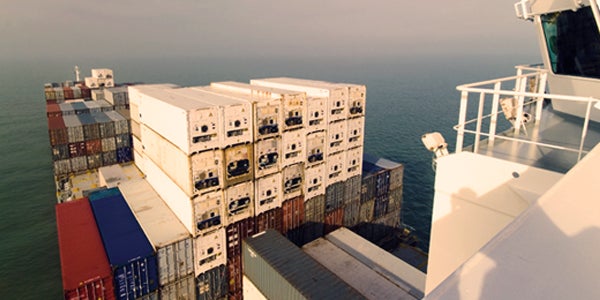
AgriBusiness Distribution and Marketing Strategies for Fresh Produce in 2022
American AgriBusiness leaders must consider new distribution logistics strategies to manage uncertain times. The perishable nature of their product highlights the concern for timely shipping accommodations for reasons outside profitability. Grocery stores and restaurants need a consistent influx of products to sustain their own business models. Timely shipments also tie into public health concerns, as spoiled food can host breeding grounds for dangerous diseases.
As it becomes increasingly difficult for American farmers to send products overseas, it may be time to think locally, opting for a more direct-to-customer approach. Additionally, AgriBusiness leaders can adopt innovations in technology, particularly real-time data analytics through Internet of Things (IoT) technology.
The reefer container shortage won’t resolve anytime soon. These alternative distribution logistics strategies may be the answer to mitigating the problem and safeguarding profits.
Leverage Data Analytics and AI To Keep Produce Fresh
Supply chain visibility is a beneficial means to avoid waste at the retail level. When grocery retailers cut back on waste, they order more consistently from producers. Consistency, however, doesn't necessarily mean more frequency. A lack of visibility across the supply chain can quickly exacerbate a cycle of under-ordering, over-ordering, and spoilage so that even when suppliers get ahold of containers, the product doesn’t necessarily meet demand.
This is where more efficient, robust data analytics can save the day. There's little one can do about a lack of reefer containers. But once one is packed and ready to ship, American AgriBusiness leaders can utilize cold chain monitoring to keep track of their shipments.

Cold Chain Monitoring
Cold chain monitoring uses IoT tech to track temperature-sensitive products in real-time. As products travel along the "cold chain" (the supply chain for perishable and temperature-sensitive goods like medicine, food, and beverages) suppliers can track container conditions and solve problems before they become significant issues.
Cold chain monitoring helps bolster the supplier's profitability while ensuring the health and safety of the end consumer. Real-time data detects issues with product temperature; this allows suppliers to minimize loss by troubleshooting or rerouting shipments to refrigerated warehouses. Alternatively, crews can locate the shipment and repair any malfunctioning equipment. Cold chain monitoring also helps with predictive maintenance, fleet management, and predictive usage analysis.
Location Monitoring
Cold chain management technology goes even further to protect your supply lines against a litany of disruptions. Location monitoring keeps you aware of your driver's or shipping partner's position should you lose connectivity. If your cold chain management software registers suboptimal temperatures in a container, you can dispatch a crew to locate it should you fall out of contact with the driver. Location monitoring also calculates the safest, most efficient routes for drivers to take. Products sensitive to vibration, like glass bottles, are just as susceptible to bumpy roads as they are to suboptimal temperatures.
Technological Considerations
Two imperative traits of any effective cold chain management software are reliable connectivity and trusted analytics. What good is the software if the sensors fail to relay data in the open ocean and across the Great Plains, or rely on data that doesn't affect your product? Together, these traits enhance distribution logistics through cold chain management.
Make sure your monitoring systems can broadcast in low-connectivity environments, like long stretches of open land and ocean. Furthermore, they'll need to broadcast through the thick walls of your reefer containers. You can also solve these connectivity issues with BLE (Bluetooth Low Energy) and RFID (Radio Frequency Identification)-based solutions, using mobile phones and other devices to broadcast over the internet. However, a hybrid IoT-based solution is the best way to maintain connectivity with your shipments.
Of course, something can always go wrong with even the most reliable technology. One bad sensor can trigger false alarms or send false reports, leading to poor decisions on your end.
An investment in a cold chain monitoring technology for your AgriBusiness requires careful planning. Consulting with a reliable financial partner with deep industry expertise can help you ensure a positive impact to your balance sheet.
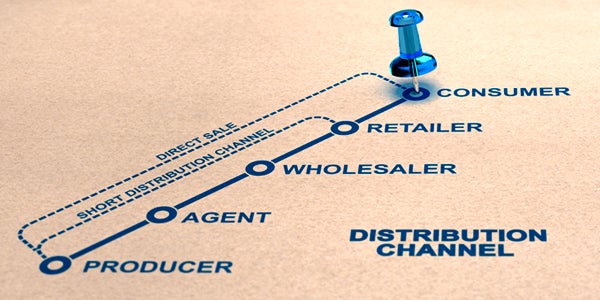
Consider Direct-to-Consumer Distribution Models
When initial Covid-19 shutdowns closed the doors on restaurants and bars, AgriBusiness owners lost much of their consistent client base. Farmers who relied on restaurants to fulfill bulk orders were forced to pivot to other strategies to make up for lost sales. Direct-to-customer (DTC) distribution models proved to be a near-term solution. Today, in the face of prolonged reefer container expenses and shortages, DTC may prove the answer once more.
A DTC model effectively cuts out the middle man, as farmers invite customers to their site. On the farm or a designated distribution area, AgriBusinesses can develop stronger relationships with their customers. They get to know and understand their needs better than as a third-party supplier. The shift to DTC comes with its own unique set of challenges (and benefits) for every supplier to keep in mind. A DTC business model offers farmers less bulk-order consistency. Sales are also limited to the kinds of crops at-home cooks are looking for. This often entails more common goods like tomatoes, cucumbers, and lettuce, rather than artisan produce.
Unlike restaurant chefs, who order to feed hundreds or even thousands of mouths, at-home cooks only have to feed their families. That’s why providing a safe and welcoming environment is crucial to gaining repeat customers.
As a bonus, farmers maintain full control over distribution and warehouse procedures in a DTC model. Since there is no intermediary to move products from farm to customer, owners can streamline fulfillment and delivery strategies to work more efficiently.
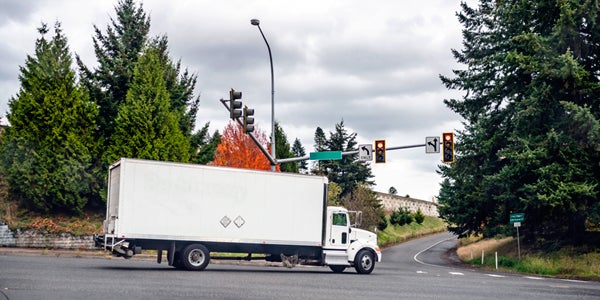
Evolve Your Fresh Produce Go-to-Market Strategy to Reach Other Markets
In the face of global supply chain issues and reefer container shortages, AgriBusinesses may want to hone their focus on the local market. This direct marketing goes hand-in-hand with direct-to-consumer sales. Narrowing logistics distribution to the surrounding areas helps you avoid wholesaler lowballing by reaching your base directly instead. Additionally, shoppers struggling to find their favorite products can go right to the source, instead of waiting for products to arrive in stores. Farmers in turn better understand what their customers want and can adapt to new trends at a premium.
However, shifting to a direct market strategy requires a deep understanding of the market, industry trends, and the impact to your cashflow and balance sheet. A trusted financial partner can help you plan for the investment and mitigate financial risk. The demand is there: especially for fast-growing market trends such as organic foods.
AgriBusiness leaders need to develop a sound, multi-pronged marketing strategy to get their localized, consumer-centric approaches off the ground. Utilize eCommerce tools and farmers' markets to reach a broader consumer base, while also developing on-site activities like educational tours. Building an AgriTourism component into your business model can provide another source of revenue and promote your products at the same time. Consider partnering with individual restaurants and schools to fulfill consistent bulk orders as well.
Direct and local selling eliminates the middle man—and the costs associated with shipping and other long-distance distribution logistics. In fact, customers often prefer to buy products directly from the source, rather than from impersonal retail outlets. They perceive the products to be fresher, more wholesome, and more flavorful, and as such are willing to pay a higher price-point for them.
Leveraging a variety of direct-to-customer business models can help to cut costs in other areas. For example, the U-pick (or pick-your-own approach) model has customers come to the farm and pick their own products. When customers pick their own product, farmers save on harvest labor costs, packaging, shipping, and storage. Of course, U-pick is often limited to products with distinct ripeness indicators, like fruits and certain seasonal vegetables.
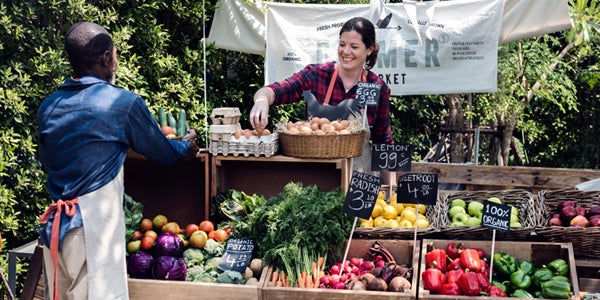
Many American AgriBusinesses have also turned to farmer's markets in the wake of supply chain difficulties. Often organized in city-owned or non-profit locations, farmer's markets offer an inexpensive alternative to roadside stands. They also serve as advertisements for your on-site business activities. Also referred to as open-air markets, these venues attract customers looking for product variety. They serve as central hubs for community-sponsored seasonal events.
Secure Your AgriBusiness’ Financial Security Today
In the face of ongoing supply chain issues, AgriBusinesses would be wise to explore alternative marketing strategies and distribution logistics in order to thrive. AgriBusiness owners can avoid loss and embrace profits by leveraging data analytics and direct-to-customer sales.
However, implementing these strategies requires adequate cash flow and sound money management, highlighting the need for a financial partner. To speak with a commercial banker who has deep insight into the agriculture industry, get in touch with First Bank & Trust, a division of HTLF Bank today.

